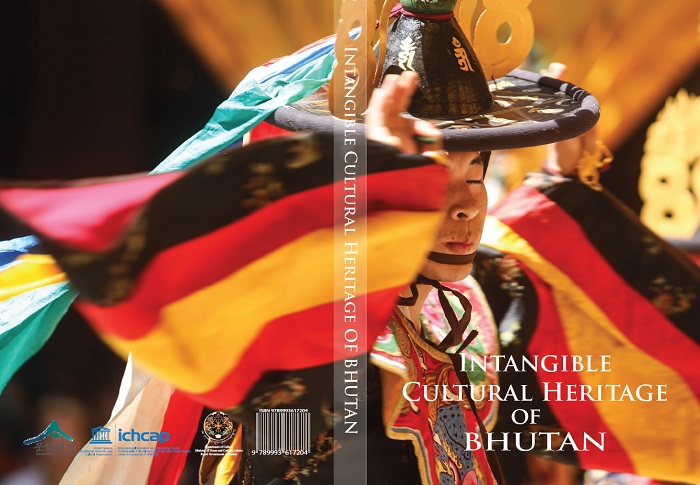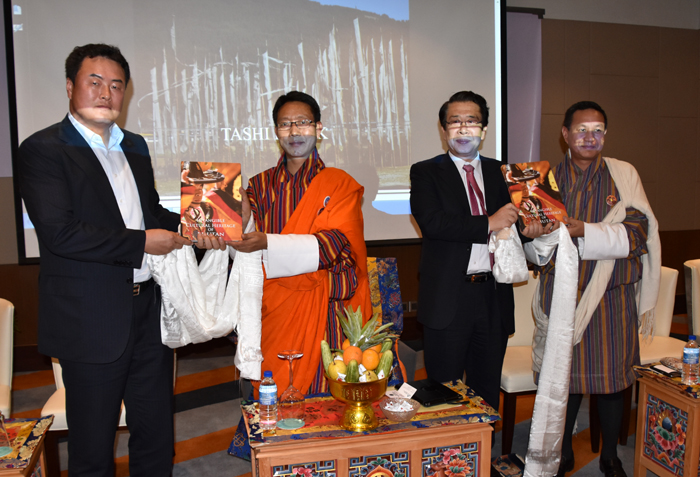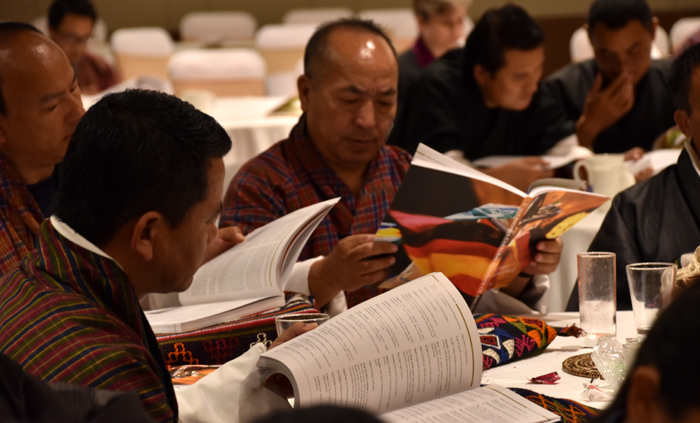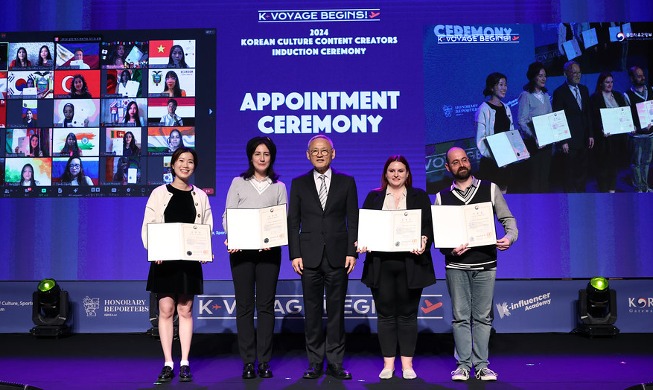-
 Korea.net's 24-hour YouTube channel
Korea.net's 24-hour YouTube channel- NEWS FOCUS
- ABOUT KOREA
- EVENTS
- RESOURCES
- GOVERNMENT
- ABOUT US
A book about Bhutan’s intangible cultural heritage has now been made public by the Korean Cultural Heritage Administration (CHA) and the International Information and Networking Centre for Intangible Cultural Heritage in the Asia-Pacific Region (ICHCAP), under the auspices of UNESCO.
Bhutan, nestled in the eastern Himalayas, has historically had a variety of tribes settling along its gorges, high in the mountains. Over the eons, each tribe developed its own community and traditions. Due to geographical factors in the mountainous region, the nation has had relatively little contact with the outside world. Therefore, most of its historical and traditional assets have kept their original form, intact over the centuries.

The CHA and the ICHCAP joined in on efforts to further conserve and promote Bhutan’s indigenous cultural assets, particularly intangible ones. One effort was to jointly publish “Intangible Cultural Heritage of Bhutan.” A series of research projects on more than 300 intangible cultural properties have been undertaken across 16 different regions in the country leading up to its publication.
The foreword gives an overview of the nation’s intangible cultural heritage, as well as describes historical precedents and the current status of the treasures. The volume consists of five chapters.
The first chapter presents Bhutanese oral traditions, specifically traditions involving its languages and dialects, as well as proverbs, folk tales, legends and myths. Chapter Two details Bhutan’s performing arts and traditional games. In particular, it presents types of ritual mask dances, such as the tsun cham performed exclusively by monks and the boe cham performed solely by lay people, both dances inspired by Buddhism. This chapter also covers folk dances, court dances, folk-based modern songs and information about traditional musical instruments.
Featured in the third chapter are traditional customs, rituals, ceremonies and festivals that exemplify the essence of Bhutanese traditions. The fourth chapter gives an account of folk knowledge and technology that has been handed down from generation to generation involving traditional medicinal practices, local healing practices, folk meteorology, astrology and astronomical knowledge, folk beliefs and superstitions. It also describes traditional houses, cuisines and beverages.
The final chapter introduces a set of traditional Bhutanese crafts. Craftspeople specialized in 13 fields of art share their expertise, for example, in leather working, traditional boot-making, pottery and calligraphy, to name just a few.


The book has been translated into both Bhutanese and English.
“This publication will help the people and communities of Bhutan find their own identity and to spread it across the world,” said an official from the CHA. “This marks a milestone in that the two countries share mutual respect and trust in cooperating on the conservation of intangible cultural heritage properties.”
By Sohn JiAe
Korea.net Staff Writer
Photos: the ICHCAP
jiae5853@korea.kr
Bhutan, nestled in the eastern Himalayas, has historically had a variety of tribes settling along its gorges, high in the mountains. Over the eons, each tribe developed its own community and traditions. Due to geographical factors in the mountainous region, the nation has had relatively little contact with the outside world. Therefore, most of its historical and traditional assets have kept their original form, intact over the centuries.

‘Intangible Cultural Heritage of Bhutan’ is co-published by the Korean Cultural Heritage Administration and the ICHCAP, under the auspices of UNESCO.
The CHA and the ICHCAP joined in on efforts to further conserve and promote Bhutan’s indigenous cultural assets, particularly intangible ones. One effort was to jointly publish “Intangible Cultural Heritage of Bhutan.” A series of research projects on more than 300 intangible cultural properties have been undertaken across 16 different regions in the country leading up to its publication.
The foreword gives an overview of the nation’s intangible cultural heritage, as well as describes historical precedents and the current status of the treasures. The volume consists of five chapters.
The first chapter presents Bhutanese oral traditions, specifically traditions involving its languages and dialects, as well as proverbs, folk tales, legends and myths. Chapter Two details Bhutan’s performing arts and traditional games. In particular, it presents types of ritual mask dances, such as the tsun cham performed exclusively by monks and the boe cham performed solely by lay people, both dances inspired by Buddhism. This chapter also covers folk dances, court dances, folk-based modern songs and information about traditional musical instruments.
Featured in the third chapter are traditional customs, rituals, ceremonies and festivals that exemplify the essence of Bhutanese traditions. The fourth chapter gives an account of folk knowledge and technology that has been handed down from generation to generation involving traditional medicinal practices, local healing practices, folk meteorology, astrology and astronomical knowledge, folk beliefs and superstitions. It also describes traditional houses, cuisines and beverages.
The final chapter introduces a set of traditional Bhutanese crafts. Craftspeople specialized in 13 fields of art share their expertise, for example, in leather working, traditional boot-making, pottery and calligraphy, to name just a few.

Director of the CHA’s heritage promotion bureau, Kim Dae-hyun (left), and ICHCAP Director General Huh Kwon (second from right) hand over copies of ‘Intangible Cultural Heritage of Bhutan’ to representatives from the Bhutanese Ministry of Home and cultural Affairs, during an event in Bhutan on July 29.

Participants browse through copies of ‘Intangible Cultural Heritage of Bhutan’ during an event to celebrate its publication on July 29 in Bhutan.
The book has been translated into both Bhutanese and English.
“This publication will help the people and communities of Bhutan find their own identity and to spread it across the world,” said an official from the CHA. “This marks a milestone in that the two countries share mutual respect and trust in cooperating on the conservation of intangible cultural heritage properties.”
By Sohn JiAe
Korea.net Staff Writer
Photos: the ICHCAP
jiae5853@korea.kr
Most popular
- Event 'K-Beauty Hang Out' draws hundreds in Philippines
- Ceremony in Seoul inducts 2,641 content creators of Korean culture
- Cultural spring festival Seoul Festa to start on May 1
- 'Mad Max' director impressed by 'cinema-literate' Korean viewers
- President, Romania pledge better defense, nuclear power ties













